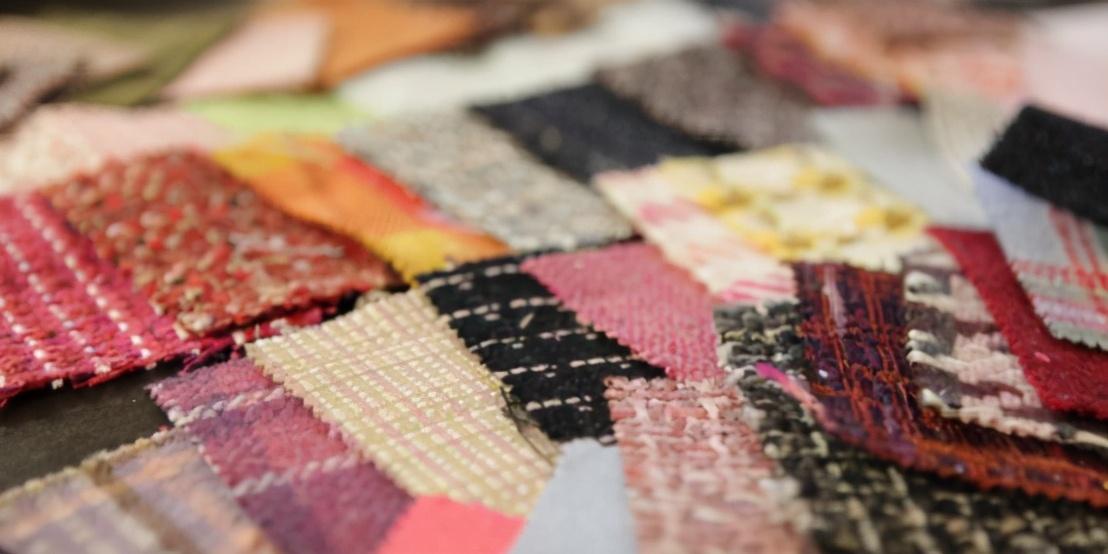What is textile fabric?
Textile fabric definition: Textile industry term, also called cloth or fabric, is made of small and flexible objects (yarns, fibers and Filament) is a sheet-like soft material obtained through certain structural relationships (crossing relationships, knotting relationships, and connecting relationships). It is widely used in clothing, medical, industrial and other fields.

Three structural relationships of fabrics
The structural relationship of fabrics generally refers to the organizational structure of fabrics, which are various raw materials (fibers, yarns, The spatial relationship between filaments) in the fabric mainly includes cross relationship, knot relationship and connection relationship. These three structural relationships of fabrics are the first and most important step for us to understand and understand fabrics, because all specifications, properties and functions of fabrics are based on the premise of these three structures.

|
Structural relationship |
Definition |
Represents fabric |
|
Cross-relation |
The two sets of yarns meet in linear motion and then contact up and down alternately, forming a stable overlapping relationship like sine and cosine curves. |
Woven fabric: On the loom, it consists of a set of warp yarns and a set of weft yarns that are perpendicular to each other according to a certain pattern. intertwined. |
|
Twisted relationship |
A group of yarns make a curved movement of left and right bends, and the yarns adjacent to each other form a stable relationship around the sleeve. . |
Knitted fabric: loops are formed by the regular movement of yarn through knitting, between loops and loops A fabric formed by stringing together each other. |
|
Connection relationship |
Yarns that are close to or in contact with each other rely on external forces such as bonding to form a stable relationship. |
Non-woven fabric: textile short fibers or filaments are oriented or randomly arranged to form a fiber web The structure is then reinforced using mechanical, thermal bonding or chemical methods. |
Fabric category distinction
1.Organizational structure Distinguish
(1) Woven fabrics, also called woven fabrics, are mainly divided into plain weave, twill weave and satin weave.r: #3F3F3F; –tt-darkmode-color: #A3A3A3;”>Double-layer, multi-layer and multiple fabrics
Generally, the front side has a greater density, or the front side has better raw materials.
Towel fabric
The side with higher terry density is the front.
Leno fabric
The grain is clear, and the side with prominent grain is the front.
3. Distinguishing between warp and weft
The warp and weft are the two yarn systems of woven fabrics. Prerequisites for fabric characterization.
(1) Observe the edge of the fabric. The direction parallel to the edge of the fabric is the warp yarn, and the direction perpendicular to the edge of the fabric is the weft yarn.
(2) The warp yarns contain sizing, and the weft yarns do not contain sizing.
(3) Generally, the direction of fabric density is the warp yarn, and the direction of low density is the weft yarn.
(4) For fabrics with obvious reed marks, the direction of the reed marks is the warp direction.
(5) If one group of yarns in the fabric is strands and the other group is single yarns, usually the strands are warp yarns and the single yarns are weft yarns.
(6) If the twist directions of the single yarns in the two directions of the fabric are different, generally the Z twist is in the warp direction and the S twist is in the weft direction.
(7) If the twists of the yarns in the fabric are different, generally the twist is larger in the warp direction and the twist is smaller in the weft direction.
(8) If the warp and weft yarns of the fabric are not very different in the number, twist direction and twist, the yarns will be uniform and the warp yarns will have better luster.
(9) For towel fabrics, the looped yarns are warp yarns, and the loopless yarns are weft yarns.
(10) Strip fabric, the strip direction is usually warp.
(11) If the fabric has a system of yarns with multiple different characteristics, this direction is the warp direction.
(12) Leno fabric, the twisted yarns are warp yarns (twisted warp), and the untwisted yarns are weft yarns.
(13) In the interweaving of different raw materials, generally cotton or linen interweaves, cotton is the warp yarn; in the interweaving of wool and silk, the silk is the warp yarn; in the interweaving of wool, silk and cotton, silk and cotton are the warp yarns; natural filament and silk In silk interwoven fabrics, natural filaments are warp yarns; in natural silk and rayon interwoven fabrics, natural filaments are warp yarns.
4.Distinction of fabric raw materials
|
Natural fiber |
Cotton, linen, wool, silk |
Analyze content |
|
Synthetic fiber |
Polyester, acrylic, nylon, vinylon, spandex, chlorine |
Identification of the same textile fiber varieties and determination of blending ratio |
|
Man-made fiber |
Viscose, soy fiber, glass fiber, metal fiber, bright silk (ice silk) |
|
|
Blended fabric |
Cotton and polyester blend (NC fabric), cotton and polyester blend (TC fabric), cotton and polyester blend (TNC fabric) |
; –tt-darkmode-color: #A3A3A3;”>Natural fiber
Cotton, linen, wool, silk
Analyze content
Synthetic fiber
Polyester, acrylic, nylon, vinylon, spandex, chlorine
Identification of the same textile fiber varieties, determination of blending ratio
Man-made fiber
Viscose, Soy fiber, glass fiber, metal fiber, bright silk (ice silk)
Blended fabric
Cotton-nylon blend (NC fabric), cotton Polyester blended fabric (TC fabric), cotton, nylon and polyester blended fabric (TNC fabric)





